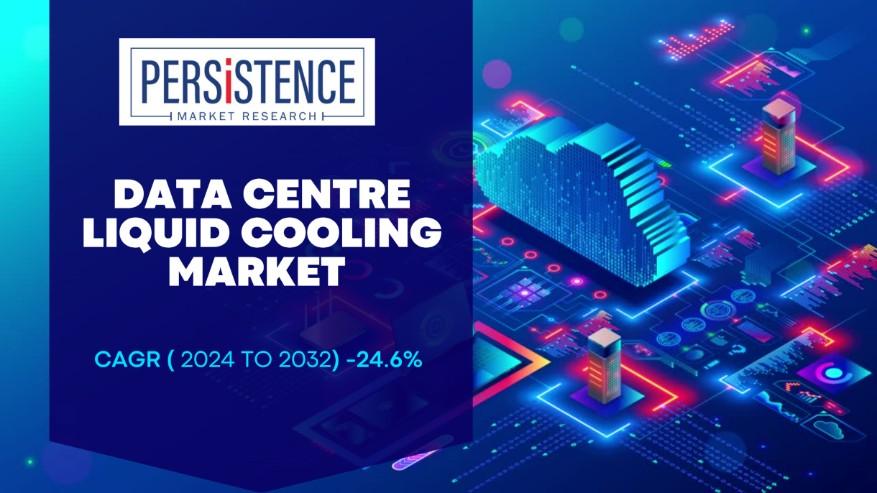Cold Plates to Grow at 23.7% CAGR, Driving Data Center Cooling Innovations
Introduction
The data center cooling market is witnessing significant innovation, with cold plates emerging as a key driver of this transformation. Projected to grow at a remarkable Compound Annual Growth Rate (CAGR) of 23.7, cold plates are rapidly gaining traction in the industry. This article explores how cold plates are revolutionizing data center cooling, the factors contributing to their rapid growth, and their role in driving broader cooling innovations.

1. The Rise of Cold Plates
What Are Cold Plates?: Cold plates are advanced cooling components designed to manage the thermal output of high-density electronic devices. They consist of a metal plate with integrated cooling channels through which a coolant circulates, effectively transferring heat away from sensitive components. This technology is becoming increasingly popular in data centers due to its efficiency and effectiveness in handling high heat loads.
Market Growth: The cold plate market is expected to grow at a CAGR of 23.7%, reflecting its growing adoption in data centers. This growth is driven by the increasing demand for highperformance computing, which necessitates advanced cooling solutions capable of managing significant heat outputs.
2. Key Drivers Behind the Growth of Cold Plates
High-Density Computing: The rise of high-performance computing (HPC) applications, such as artificial intelligence (AI) and machine learning, is driving the demand for efficient cooling solutions. Cold plates are particularly effective in managing the heat generated by high-density server configurations, making them a critical component in modern data centers.
Efficiency and Performance: Cold plates offer superior cooling performance compared to traditional air-based methods. By providing targeted cooling directly to high-heat components, they enhance overall system efficiency and reliability. This performance advantage is driving their adoption in data centers seeking to optimize cooling and manage thermal loads more effectively.
Compact Design: The compact design of cold plates allows for integration into dense server configurations without significantly impacting space or layout. This is crucial as data centers continue to increase server density to meet growing data processing needs. Cold plates provide an efficient cooling solution that fits well within the constrained spaces of high-density environments.
3. Technological Innovations Driving Cold Plate Adoption
Advanced Materials: Innovations in materials science have led to the development of more efficient and durable cold plates. High thermal conductivity materials, such as copper and aluminum alloys, are being used to enhance heat transfer and cooling efficiency. These advancements contribute to the overall effectiveness and reliability of cold plates in data center applications.
Integration with Immersion Cooling: Cold plates are increasingly being integrated with immersion cooling systems, where electronic components are submerged in a thermally conductive liquid. This integration allows for even more efficient cooling solutions, combining the benefits of both technologies to manage high heat loads and improve overall system performance.
Customizable Solutions: The ability to customize cold plates to fit specific data center requirements is another factor driving their growth. Manufacturers are offering tailored solutions to address unique cooling challenges, such as managing heat from specialized equipment or high-density server configurations.
4. Cold Plates and Sustainability
Energy Efficiency: Cold plates contribute to energy efficiency by reducing the amount of energy required for cooling. By directly targeting heat sources and minimizing energy loss, cold plates help data centers achieve lower operational costs and meet sustainability goals.
Environmental Impact: With their ability to enhance cooling performance and reduce energy consumption, cold plates align with broader environmental goals. Data centers adopting cold plates can reduce their carbon footprints and support global efforts to mitigate climate change.
5. Investment Opportunities and Market Potential
Key Players and Innovations: Major players in the cold plate market, including companies like Asetek, Cooler Master, and Advanced Thermal Solutions, are leading the development and commercialization of advanced cold plate technologies. Investing in these companies provides exposure to the growing market and its innovative solutions.
Emerging Startups: The market is also seeing growth from emerging startups that are developing next-generation cold plate technologies. These new entrants offer opportunities for investors seeking to support cutting-edge innovations and capitalize on the rapid growth of the cooling industry.
Data Center Expansion: As data centers continue to expand and upgrade their cooling systems, the demand for cold plates is expected to rise. Investors can benefit from this trend by targeting companies involved in data center infrastructure development and cooling technology.
Conclusion
Cold plates are set to drive significant innovations in the data center cooling market, with a projected growth rate of 23.7% CAGR. Their superior cooling performance, compact design, and efficiency make them a crucial component in managing the thermal challenges of high-density computing environments. As data centers continue to evolve and face new cooling requirements,
cold plates will play a pivotal role in advancing cooling technologies and supporting the industry's growth. Understanding the factors driving this market and exploring investment opportunities in cold plate technologies can provide valuable insights into the future of data center cooling.
